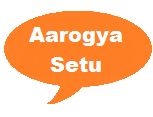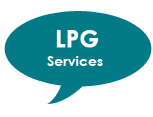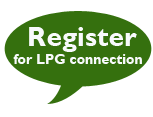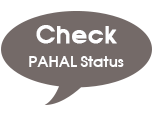|
My Bharatgas uses temporary cookies to store certain (that is not sensitive personal) data or information that is used by us and our service providers for the technical administration of My Bharatgas, research and development, and for user administration. In the course of serving advertisements or optimizing services to you, we may allow authorized third parties to place or recognize a unique cookie on your browser. The cookies however, do not store any Personal Information that belongs to you. You may disable cookies at your discretion. However, if you block all cookies (including essential cookies), you may not be able to access all or parts of My Bharatgas or you may face reduced functionality when accessing certain features of My Bharatgas.

Simple rules of usage
The use of Cooking Gas, calls for some simple and easy-to-observe safety precautions which help to make your kitchen a "Safe Zone" in your home. Just remember to follow the tips given below:
- Cylinder must be always kept in vertical position, away from any source of heat and in a ventilated place.
- The hot plate should always be placed on a platform (made of non-flammable material) above the cylinder level.
- Always remember to switch off the pressure regulator when the stove is not in use, especially at night. Never tamper with or try to repair the cylinder or allied equipment yourself.
- Make sure all parts of the installation are in good condition. If anything seems wrong with any part, call for the distributor's trained mechanic.
- It is safer to wear cotton clothing while working in the kitchen. Use of dupatta, sari or cloth to handle utensils could be a fire hazard.
- Wearing a fire retardant apron while cooking is a safe practice.
- Children must be kept away from the installation while cooking.
- Use only ISI marked HOT PLATES.
- Never leave the hotplate unattended while in use as the burner flame could get extinguished due to overflow of cooking material or even gust of wind. This would lead leakage of Gas from the burner. The accumulated gas could get ignited by the second/other burner in operation or any other source of ignition, resulting in fire.
- Fry Pan / Pressure Cooker should be placed in a manner so that their handle is away from the flame.
- Plastic items must be kept away from the gas stove.
- Rubber tube is the weakest link in a LPG connection. It must be regularly checked and changed immediately in case any visible cracks / damage are noticed. Use of "SURAKSHA" LPG hose sold by LPG distributor is recommended for its enhanced safety features and longer life. Rubber Tube, if used, must be ISI approved.
- As a rule, the rubber tube must be replaced every two years and "Suraksha" LPG hose every five years.
- The safety cap must always be put on the valve of the unused cylinders, whether full or empty.
Spare a little of your time during Cylinder Delivery at your residence
- At the time of taking refill delivery, you must satisfy yourself with the condition of the cylinder seal and weight.
- Once you acknowledge the cylinder has the seal intact, correct weight & in good condition, the deliveryman will break open the seal in your presence and check that the cylinder is sound and fit for use.
- You must insist on getting the cylinder connected to the regulator (DPR) and have the installation checked for proper functioning, even for the additional cylinder.
- LPG Distributor's deliveryman carries a weighing scale. In case, you desire he will get the cylinder weighed in your presence.
Steps to be followed while disconnecting/connecting cylinder
Disconnecting Cylinder:
1. To remove the safety cap, PULL the cord, and LIFT the cap off the valve.
2. To fix the regulator on the filled cylinder, carry out the following steps :
a. Ensure the knob of the regulator is in the 'off' position ('Off' letters shown on top).
b. Grip the regulator and pull the black plastic bush up.
c. Place the regulator vertically on the valve and press it down with a gentle swivel. Release the black plastic bush and press it down. (You may hear a click sound).
d. The pressure regulator is now locked.
Continue... ...Back
To Light The Burner:
1. Turn the switch knob anti-clockwise till it is in 'O' position. This opens the valve on the LPG cylinder allowing the gas to pass through the regulator to the stove.
2. HOLD a lighted matchstick near the burner head.
3. Turn the knob of the burner to ON position.
When you have finished using the burner, turn the knob of the burner as well as the regulator to the 'off' position.
Inspection of the LPG Installation
You must insist on a mandatory inspection of their LPG installation once in 5 years by the trained mechanic. This service is available on payment of the requisite charges approved by Oil Marketing Companies. This will help in safe up keep of the domestic LPG installation.
In case of Leakage
In the rare event of Leakage or in case there is smell of gas:
- Do not panic.
- Turn the pressure regulator (DPR) knob to the 'OFF' position.
- Put out all fires in the kitchen / vicinity (including agarbatti and pooja lamp etc).
- Do Not light matchstick/lighter. Do Not switch 'On' or switch 'Off' any electrical switches (including main switch). Remember that electrical switches and dry cell torches generate spark while switching on or off.
- Open all doors and windows for ventilation.
- Call the distributor / the Emergency Number immediately,
















